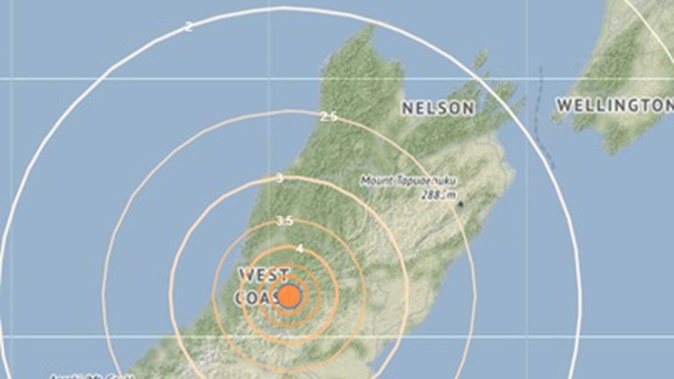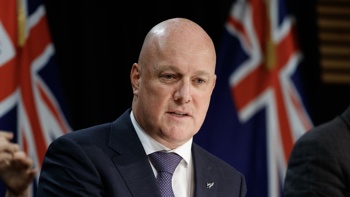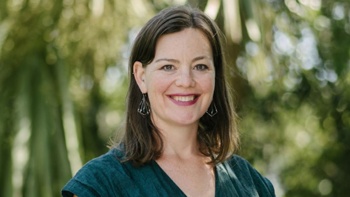
The South Island has been rattled by two widely-felt earthquakes within half a day – but scientists say there’s no direct link between them.
A shallow 5.2 quake that struck just after 10pm last night, about 25km northeast of Arthur’s Pass, caused strong enough shaking to be felt across the upper South Island.
Then, at 11.07am today, a second quake, centred about 30km north-east of Picton, hit at a much lower depth of 33km - but was still reported felt by several thousand people.
GNS Science duty seismologist Jen Andrews said that, being distant from one another, there was little to connect the two events – except for the fact that both ultimately stemmed from New Zealand’s shaky position at the boundary of two tectonic plates.
“In terms of the stress that they caused... that’s going to be very localised for events of this size,” Andrews said.
“It’s all connected by the fact we’ve got this very seismically active country with a huge number of faults - and that’s all related to the convergence of these two plates here.”
Last night’s event stuck in the region of the Hope Fault, which branched off the better-known Alpine Fault and ran in a near-straight line for about 230km to the South Island’s east coast.
“It was a fairly standard event for us,” she said.
“Obviously, we’ve got 24/7 monitoring and we’ll keep an eye on it, and we’ll be looking for any aftershocks – there haven’t been too many so far.”
She also wasn’t expecting large numbers of aftershocks from the Marlborough event, which occurred at an interface where the Pacific plate was diving down beneath the Australian plate.
“It wasn’t felt particularly strongly, but it was felt throughout the top half of the South Island and the south of the North Island,” Andrews said.
“We get events like this in the Marlborough region at that depth, related to that down-going slab, every month or so.”
The biggest quakes of the year remained a pair of 6.0 events: one that struck near Paraparaumu amid the Cyclone Gabrielle disaster on February 15, and another recorded about 45km north of Geraldine on September 20.
Other notable shakes have included a magnitude 5.6 event, north of French Pass, on August 11; a 5.9 event near Pōrangahau on April 26; and spates of quakes recorded around Kawerau, Te Aroha and Pōrangahau.
But that didn’t mean there’d been more activity than usual this year.
The 10,957 quakes recorded over 2023′s first six months was relatively close to average, given our seismometers normally register around 20,000 in a year.
This week’s twin events came as scientists have published new insights into how the ground beneath Wellington moves amid big earthquakes – which could help engineers design more resilient buildings.
The capital’s vulnerability to violent shaking was well highlighted by 2013′s Lake Grassmere and Seddon earthquakes – and again in the incredibly complex 7.8 Kaikoura Earthquake of 2016.
That event produced strong waves that effectively got trapped in the sediment basin beneath Wellington, causing unexpected damage in the Pipitea and CentrePort area of the city.
Other severely damaged buildings on CentrePort’s land included Statistics House, Customhouse, Shed 39 and the BNZ building – while, in Thorndon, 61 Molesworth St and Defence House eventually had to be demolished.
/cloudfront-ap-southeast-2.images.arcpublishing.com/nzme/C33VDOPHKDVWJZ2T27K52Y57NU.jpg) Damage to the Wellington waterfront after the Kaikoura earthquake. Photo / University of Canterbury
Damage to the Wellington waterfront after the Kaikoura earthquake. Photo / University of Canterbury
The 2016 quake was the focus of a new University of Canterbury-led study, which looked deeper at Wellington’s “basin effect.
“There has always been a lot of focus on the damage the faults under Wellington itself may cause, so it was alarming to see the significant damage to buildings in Wellington from relatively lower shaking produced by an earthquake more than 60 kilometres away,” study leader Professor Brendon Bradley said.
The researchers investigated the locations with seismic instruments and compared the detailed GeoNet ground-motion data with the damage to buildings in that area.
“We found in certain places that the characteristics of the soils amplify the shaking over a narrow range of frequencies that can specifically affect 10-storey buildings, which were badly affected, but 20-storey buildings a lot less; while in other locations the findings could be the opposite.”
These findings could help engineers in designing new buildings - or assessing existing ones - to more accurately predict how the ground and the buildings could behave in future quakes, Bradley said.
“Because there is a lot of variation in this basin amplification from location to location, it was difficult to recommend simple changes to the building standard, so instead we have created holistic guidance primarily for important safety-critical structures.”
With a further EQC research grant, Bradley’s team planned to simulate future earthquakes in other parts of the city, before looking at shaking potential in other centres like Auckland, Christchurch, Tauranga and Napier.
At the same time, scientists in a new Victoria University-led research programme are exploring how our next giant earthquake – such as an 8.0 rupture on the Alpine Fault – could leave a decades-long legacy of quakes larger than 7.0 in central New Zealand.
Jamie Morton is a specialist in science and environmental reporting. He joined the Herald in 2011 and writes about everything from conservation and climate change to natural hazards and new technology.
Take your Radio, Podcasts and Music with you









